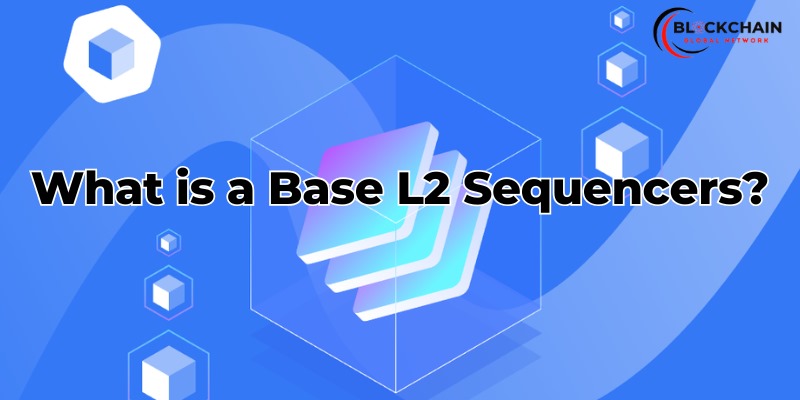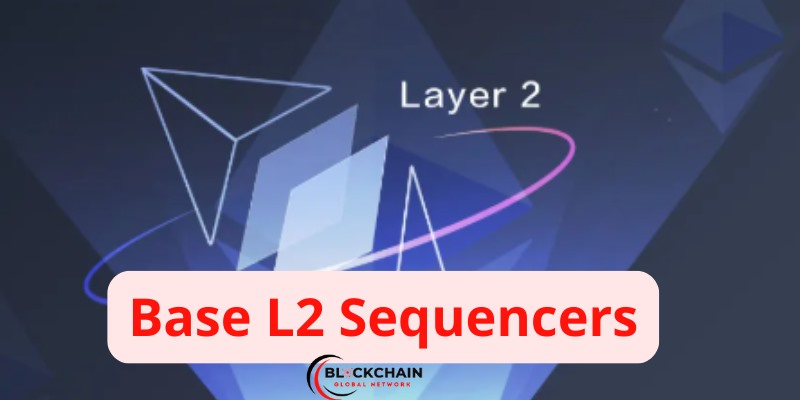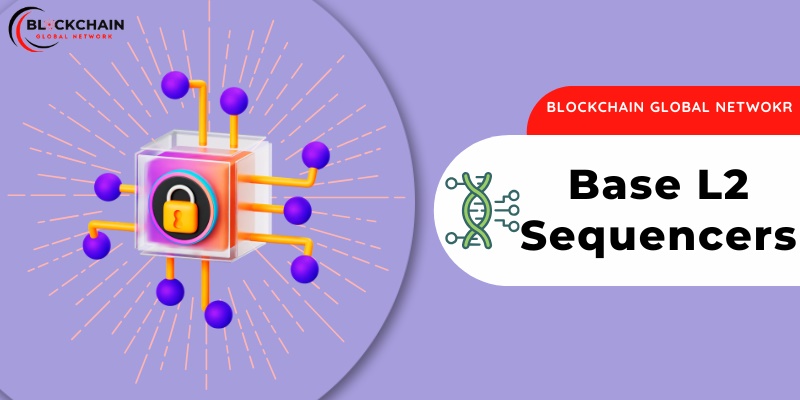What is a Base L2 Sequencers?
A Base L2 Sequencer is a critical component of Layer 2 blockchain solutions, particularly in networks that aim to scale Ethereum or other similar blockchains. In simple terms, the sequencer is responsible for determining the order of transactions within the Layer 2 network, ensuring that transactions are processed efficiently, securely, and in the correct sequence before being submitted to the main Ethereum chain (Layer 1).
Layer 2 solutions are designed to improve the scalability of the Ethereum network by processing most of the transaction workload off-chain. However, even with transactions happening off-chain, the security and decentralization of Ethereum must still be upheld. The sequencer plays a central role in this process by ensuring that transaction order and integrity are maintained in the Layer 2 environment.

How does a base L2 Sequencer work?
A Base L2 Sequencer works by organizing transactions in the Layer 2 environment before submitting them to Layer 1. Here’s a step-by-step breakdown of its operation:
- Transaction Collection: The sequencer collects transactions from users and applications interacting with the Layer 2 network. These transactions are typically faster and cheaper than Layer 1 transactions due to the reduced congestion on Layer 2.
- Transaction Ordering: The sequencer is responsible for determining the order in which transactions are processed. This ordering is crucial because blockchain systems depend on a specific sequence of events to maintain the integrity and consistency of the state.
- Processing and Validation: After determining the correct order, the sequencer processes the transactions in batches. It ensures that each transaction adheres to the rules and conditions of the network and is valid before they move to the next stage.
- Posting to Layer 1: Once the sequencer has processed the transactions, it posts them to the Ethereum mainnet (Layer 1) in a compressed format. This allows the system to leverage Ethereum’s security while offloading much of the computational work to Layer 2.
Why is a Base L2 Sequencer Important?
The introduction of a Base L2 Sequencer is a game-changer in blockchain scalability. Here’s why it is so essential:
- Increased Scalability
The most significant advantage of using a Layer 2 solution with a sequencer is the ability to dramatically increase transaction throughput. By processing transactions off the Ethereum mainnet, the sequencer helps reduce congestion on Layer 1, allowing the Ethereum network to process more transactions per second (TPS).
Without a sequencer, managing the order of transactions on Layer 2 would be far more complex, as there would be no clear authority to decide which transactions should be processed first. The sequencer provides the necessary structure for Layer 2 networks to scale without compromising security or decentralization.
- Cost Efficiency
Layer 2 solutions are designed to reduce transaction costs. By bundling multiple transactions together and submitting them as a single batch to Layer 1, a sequencer minimizes the cost per transaction. The process is similar to “rollups,” where multiple Layer 2 transactions are aggregated into a single Layer 1 transaction, saving gas fees and reducing overall costs for users and developers.
- Enhanced Security and Decentralization
While Layer 2 solutions can process transactions off-chain, they must still rely on the security of Layer 1 (Ethereum). The sequencer ensures that transactions are processed in a manner that is consistent with Ethereum’s rules and that the final state of the Layer 2 network can be trusted when it is eventually submitted to Layer 1.
By maintaining this link with Ethereum, a Base L2 Sequencer ensures that security is never sacrificed, and the integrity of the entire network remains intact. In contrast to centralized systems where transaction sequencing can be arbitrary or controlled by a single entity, the sequencer in a decentralized Layer 2 solution helps uphold fairness and trust.
- Reduced Latency
Since the sequencer processes transactions more efficiently than Layer 1, it can significantly reduce the time it takes to confirm a transaction. This lower latency improves the user experience, particularly in applications that require fast transaction finality, such as decentralized finance (DeFi) platforms and non-fungible token (NFT) markets.
- Improved User Experience
By handling transactions off-chain and processing them efficiently, the Base L2 Sequencer enhances the overall user experience. Users are able to interact with blockchain applications without the delays and high fees typically associated with Ethereum’s mainnet. The sequencer ensures that transactions are fast, cost-effective, and processed in the correct order, all of which contribute to a smoother and more seamless interaction with the blockchain.

Centralized vs. Decentralized Sequencers
Currently, many Layer 2 networks, including Base, utilize centralized sequencers. In this model, a single entity—such as Coinbase for Base—manages transaction processing. While centralized sequencers can deliver faster transaction times and improved user experiences, they also introduce risks associated with centralization.
Centralized sequencers can create a single point of failure, where outages or technical issues can halt transaction processing entirely. Additionally, they may have the power to censor transactions or manipulate transaction ordering for profit through techniques like Maximum Extractable Value (MEV). This potential for abuse raises concerns about fairness and transparency within the ecosystem.
In contrast, decentralized sequencers distribute transaction processing across multiple nodes. This model mitigates risks associated with centralization by reducing reliance on any single entity. However, decentralized systems may face challenges related to coordination and efficiency compared to their centralized counterparts.
Benefits of Using a Base L2 Sequencer
The implementation of a Base L2 sequencer offers several advantages:
- Improved Scalability: By processing transactions off-chain and batching them before submission to Layer 1, Base significantly increases transaction throughput while reducing congestion on the Ethereum network.
- Cost Efficiency: Lower gas fees associated with Layer 2 transactions make it more accessible for users to engage with dApps without incurring prohibitive costs.
- Enhanced User Experience: Near-instant transaction finality provided by the sequencer improves user satisfaction and encourages greater participation in DeFi activities.
- Security through Aggregation: By leveraging Ethereum’s security model while executing transactions off-chain, Base ensures that users benefit from robust security measures without sacrificing performance.
Challenges Facing Base L2 Sequencers
Despite their advantages, Base L2 sequencers face several challenges that need addressing:
- Centralization Risks: The reliance on a single entity for transaction processing can lead to vulnerabilities and potential abuse of power.
- Censorship Concerns: Centralized sequencers may choose to exclude certain transactions from being processed based on arbitrary criteria or profit motives.
- Withdrawal Delays: Users may experience longer withdrawal periods due to fraud-proof mechanisms designed to protect against invalid transactions.
Learn how Cow DAO Base L2 Chain is making blockchain faster, cheaper, and more scalable! Click here to read the full article and discover the next big thing in decentralized technology. Read more!

Future Developments in Base L2 Sequencers
As the blockchain landscape evolves, there are ongoing discussions about enhancing decentralization within Layer 2 networks like Base. Potential solutions include introducing shared or decentralized sequencers that can distribute transaction processing across multiple nodes while maintaining efficiency. Such developments could help mitigate centralization risks while preserving the benefits of fast and cost-effective transactions.
In conclusion, the Base L2 sequencer represents a significant advancement in blockchain technology, facilitating efficient transaction processing while addressing scalability issues faced by Ethereum. As more users adopt Layer 2 solutions seeking faster and cheaper transactions, understanding the role of sequencers will be crucial in navigating this rapidly evolving landscape. By balancing efficiency with decentralization efforts, Base aims to create a more resilient ecosystem that empowers users and fosters innovation within decentralized finance.
Follow Blockchain Global Network for the latest news, updates, and insights on blockchain technology. Don’t miss out on the future of decentralized solutions – follow us today!

RELATED POSTS
Sonic Labs Airdrop – Discover the Super HOT Token Burn Mechanism
One of the highlights of...
The Evolution of Cryptocurrency and Blockchain Technology – 7 Things to Look Forward To
Cryptocurrency and Blockchain Technology have...
Blast Airdrop – Tips for Earning KRO Tokens Easily
Earning KRO tokens from the...
Cryptocurrency Ro Khanna and the future of regulation
Discover how cryptocurrency ro khanna...
In-Depth Analysis of ERC20 Airdrop Tools
Looking for the best ERC20...
Fishwar Airdrop – Play to Earn on the Sei Blockchain
Fishwar Airdrop, a prominent project...
Exploring the Use of blockchain technology in different sectors
The use of blockchain technology...
Tellor (TRB Crypto): A secure oracle solution for DeFi
In the blockchain world, accessing...
What is Bitcoin Lightning Network? Revolutionizing Crypto Transactions
What is Bitcoin Lightning Network?...
Helios consensus: The engine powering U2U Chain’s blockchain revolution
Ever wondered how U2U Chain...
What are the three advantages of using blockchain technology
Curious about “What are the...
Milena Mayorga: Influential person in El Salvador politics
Milena Mayorga, a prominent figure...
Seer Airdrop: A chance to receive free SEER Tokens
Seer Airdrop is attracting the...
Unveiling the secrets of blockchain technology meaning
What if the key to...
The role of DAOS in Education – How DAOs Revolutionize Learning and Teaching
Discover how DAOs are transforming...
How does Robinhood work? The Gateway to Blockchain
In today’s rapidly evolving financial...